Physical Address
304 North Cardinal St.
Dorchester Center, MA 02124
Lymphomas are a result of chromosomal alterations resulting in the uncontrolled growth of cells of lymphoid origin. In children, lymphomas are the third most common type of cancer, accounting for 11% of new diagnoses under the age of 15 and increasing to 21% in adolescents between the ages of 15 and 19. Combined, Hodgkin and non-Hodgkin lymphoma are the second most common childhood solid tumor (behind brain tumors and ahead of soft tissue sarcomas and neuroblastoma).
Lymphomas have classically been divided into two distinct groups: Hodgkin disease (HD) and non-Hodgkin lymphoma (NHL). In 2001, HD was designated Hodgkin lymphoma (HL) by the World Health Organization (WHO) lymphoma classification system. Typically, patients with both HL and NHL are initially seen with enlarged lymph nodes and may have systemic symptoms of fever, fatigue, and/or extralymphatic spread. However, these two types of lymphoma often have clear differences in clinical presentation. HL usually is seen as an indolent process, whereas NHL in children is most often seen with a rapid onset of symptoms. Because of this propensity for rapid growth, children with NHL often have associated anatomic and metabolic comorbidities to such a degree that their recognition and need for treatment can constitute a medical emergency. With HL, treatment is based primarily on staging and less on histologic subtype. In contrast, the current treatment of NHL depends on the histologic and immunophenotypic subtypes in addition to stage.
These two lymphomas are truly a study of contrasts. This is no more evident than in the evolution of their therapy. For years, HL has been one of the most curable cancers. Now, with markedly improved treatment protocols, NHL has a nearly equivalent survival rate. Children under 15 years of age had 5-year relative survival rates of 97.7% for HL and 90.7% for NHL from 2006–2012. Owing to the historic high survival with HL, its therapy has focused on a reduction in intensity. In contrast, because of its previously poor prognosis, NHL therapy has focused on intensification of therapy. The use of higher doses of chemotherapy over a shorter period (as compared with prior methods) has resulted in the dramatic improvement in response and cure rates in children with NHL.
In considering the surgeon’s role in the treatment for childhood lymphomas, there are no real differences between the two types of lymphomas. However, in contrast to other solid tumors of childhood, in which initial resection of the tumor is important, the primary role of the surgeon in the initial management of lymphomas is to ensure the rapid attainment of adequate and properly preserved biopsy material to enable the pathologist to make the diagnosis of the specific type and subtype of lymphoma. Except for select situations, resection at the time of presentation is not part of the current management of lymphomas.
In his classic thesis in 1832, Thomas Hodgkin described the gross necropsy examinations of seven patients. He noted the association of generalized lymphadenopathy and splenomegaly in six patients without evidence of infection or inflammation. Histologic descriptions of the Reed–Sternberg (RS) cell, the pathognomonic multinucleated giant cell, did not occur until after the turn of the century. Even though the etiology was unclear, therapeutic interventions began soon after the discovery of X-rays. More successful application of radiation therapy awaited the description of the disease’s propensity for contiguous spread. With this knowledge, application of radiation to the involved and adjacent nodal areas (extended-field technique) resulted in improvements in survival in the late 1930s. In the early 1960s, due to limitations in the radiologic techniques of that era, the practice of systematic laparotomy, splenectomy, and celiac node and liver biopsy at the time of initial presentation was developed for the purpose of staging and for targeted therapy. This has been described as the model for the careful staging of cancer as a required prerequisite to the design of therapy, which is a hallmark of oncologic practice today. During this same time, combination chemotherapy entered into the treatment armamentarium and remission and cure rates markedly improved. These improvements have made HL one of the most curable cancers today, with a 5-year relative survival of 97% for patients ages 0–19 diagnosed between 2007 and 2013. With this high expectation for cure, attention over the past decade has focused on reducing the long-term sequelae of treatment. To this end, chemotherapy has evolved from an adjunctive role to a primary one, with the hope of eliminating the need for irradiation (and its attendant sequelae) altogether. When irradiation is needed, if used in combination with chemotherapy, the focus has been to reduce the size of the fields (from extended to involved) as well as the radiation doses. The two classic chemotherapy combinations (MOPP: nitrogen mustard, vincristine [Oncovin], procarbazine, prednisone; and ABVD: doxorubicin [Adriamycin], bleomycin, vinblastine, dacarbazine) have evolved. Hybrids of these combinations are now being utilized to reduce the toxicity to the patient, with fewer cycles given in more favorable populations. Newer, targeted therapies are being investigated in frontline trials.
It is estimated that 8260 individuals will be diagnosed with HL in the United States in 2019, accounting for just 0.5% of all cancers and only 10% of all lymphomas. However, in children ages 0–14, it is the eighth most common type of cancer, with approximately 400 children diagnosed annually. This constitutes 4% of all childhood cases of cancer and almost half of all childhood cases of lymphoma. HL has an incidence of 3 cases/100,000 in adolescents 15–19 years of age. A bimodal distribution exists when considering all ages, but in children alone, a gradual trend is seen of increasing incidence with increasing age ( Fig. 68.1 ). HL is exceedingly rare in children younger than 4 years of age and peaks in the adolescent years. In the 15–19 year age group, it is the most common of the two lymphomas. A slight male predominance (1.4:1) is noted in teens, but in the youngest children, the male-to-female ratio is much larger (3:1).
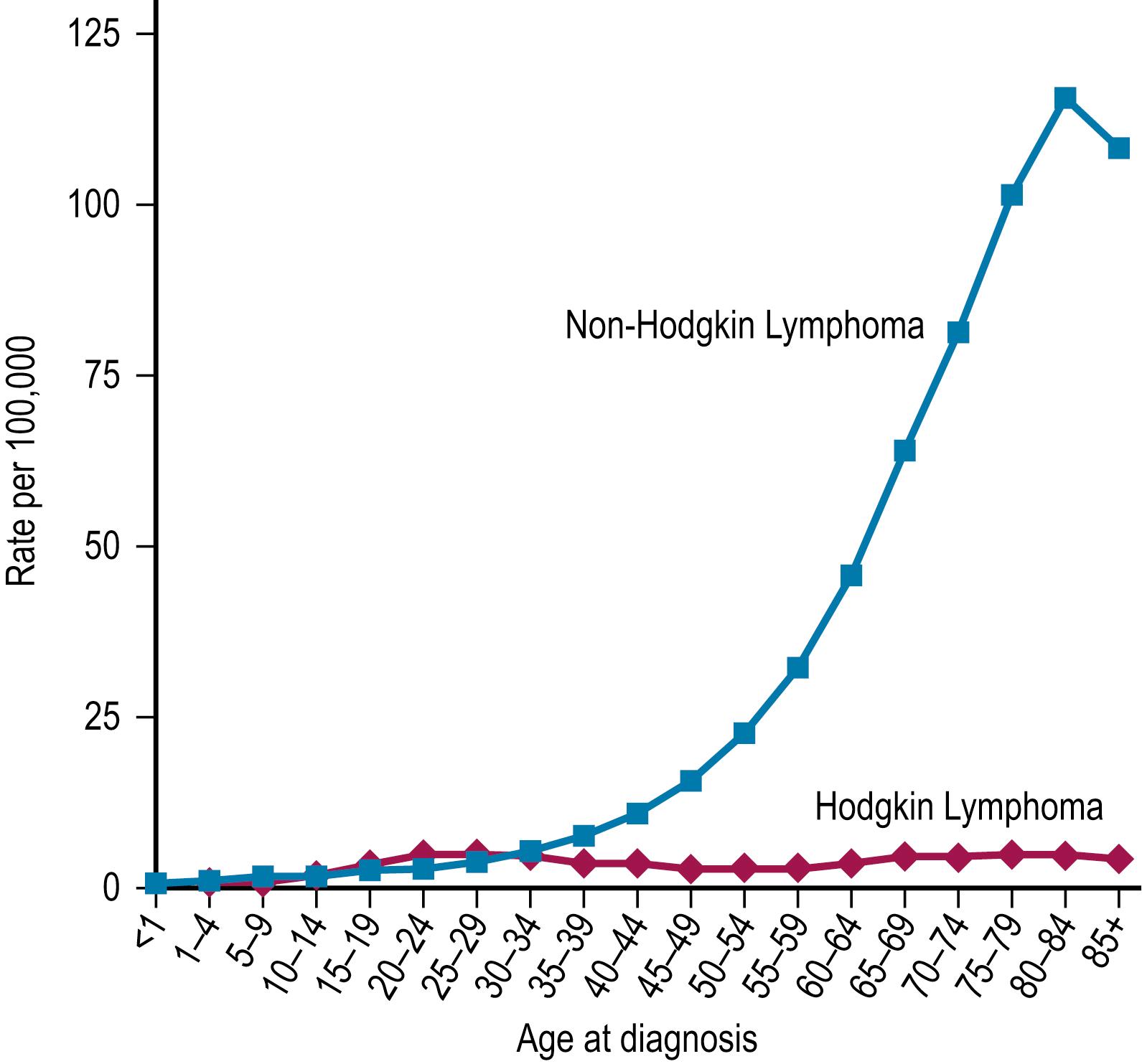
Monozygotic twins of HL patients have been found to be at greater risk of developing HL than are dizygotic twins, strongly implicating genetics as a principal risk factor, with an increased risk of HL in first-degree relatives noted in multiple reports. In young adults, an increased risk of HL is found with higher socioeconomic status. Young adults with HL come from smaller families, have fewer infectious exposures as young children, and/or have later exposure to infections than do control populations. This correlates closely with socioeconomic status and implicates delayed exposure to infections as a principal risk factor.
Most likely, a combination of genetic risk and infectious exposure predisposes a young adult to HL. Immunodeficiency may be the link between these two risk factors, at least in a subgroup of HL patients. HL is more prevalent in human immunodeficiency virus (HIV)-infected patients. Also, patients with HL have a higher incidence of cellular immunodeficiency at the time of diagnosis. Etiologic theories encompass these two risk factors and focus primarily on the Epstein–Barr virus (EBV). Genomic material from EBV has been found in the RS cells in up to 80% of HL cases. A higher risk of HL has been noted in individuals with a history of infectious mononucleosis and with previously high titers to EBV. One hypothesis that incorporates these factors suggests the following sequence: (1) a genetic, iatrogenic, or viral immunosuppression; (2) subsequently or coincidentally, an EBV infection or oncogenic rearrangement in a lymphoid precursor cell; (3) further genetic alterations, followed by (4) clonal expansion of lymphoid cells with the morphologic features of RS cells, finally resulting in (5) the clinical syndrome known as HL, diagnosed by the presence of RS cells.
The diagnosis of classic HL requires the dual finding of the diagnostic Hodgkin and RS cells (HRS cells) plus a reactive cellular background. The RS cell is a large cell (15–45 mm) with an “owl’s eye” appearance ( Fig. 68.2 ). It has a multilobed nucleus (or is multinucleated), with a prominent eosinophilic nucleolus surrounded by a clear zone (halo) and an intensely stained nuclear membrane. The “owl’s eye” appearance is the result of a bilobed nucleus. The RS cell often makes up no more than 2% of the involved cells. Hodgkin cells are the mononuclear variant of RS cells. The cellular background is a reactive, pleomorphic mixture of inflammatory cells including reactive lymphocytes, histiocytes, plasma cells, eosinophils, neutrophils, and fibroblasts, with varying degrees of fibrosis and sclerosis. The HRS cell is a clonal, neoplastic cell seen in classic HL and is thought to induce the reactive background through the abundant release of various cytokines. HRS cells typically are CD15 and CD30 positive and negative for CD45 and B-lineage antigens. In contrast, the nodular lymphocyte predominant (LP) HL cells (popcorn cells) are usually positive for B-lineage antigens, expression of CD15 and CD30 is lacking, and the immunoglobulin genes are expressed.
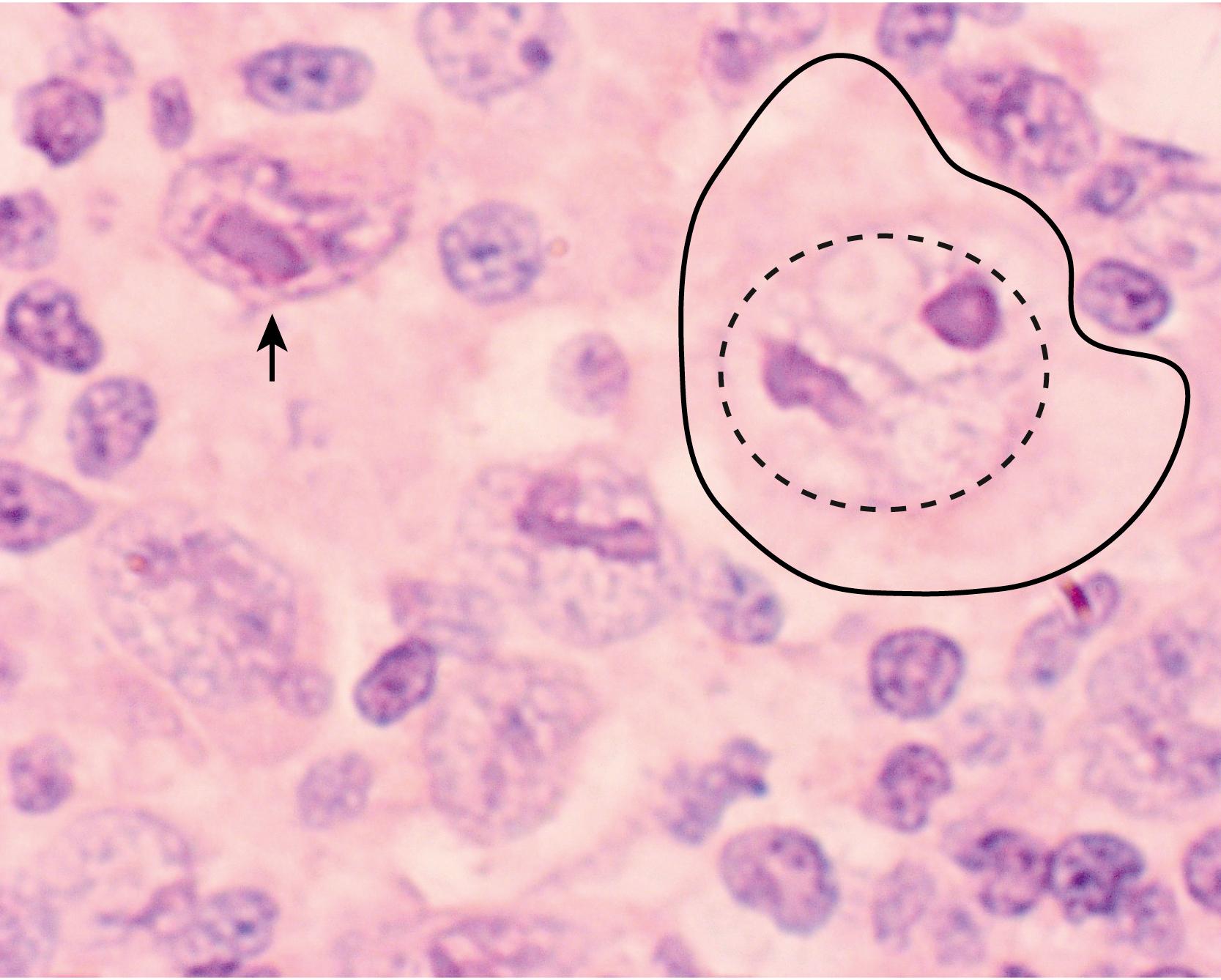
The Rye classification was commonly used for three decades for histologic typing, but has been supplanted by the WHO classification. The 2016 WHO classification lists two major types of HL: classic HL and nodular LPHL. Classic HL is further divided into four subtypes by morphology. These subtypes include nodular sclerosis (NS, the most common type in children), mixed cellularity (MC), lymphocyte rich (LR), and lymphocyte depleted (LD). The NS subtype is seen in 55% of younger patients and 80% of adolescents. It is characterized by tumor nodules surrounded by broad sclerotic bands arising from a thickened fibrotic capsule ( Fig. 68.3 ). This subtype has a strong predilection for involving the lower cervical, supraclavicular, and mediastinal lymph nodes. The MC subtype is found in 30% of pediatric cases and has an increased incidence in younger children. HRS cells are typically increased in number. The lymph node architecture is often completely effaced by the HRS cells and their surrounding reactive cells. This subtype often is first seen with advanced, widely disseminated disease in extranodal sites. In addition to its relatively common incidence among all HL patients, it is the most common histologic type seen in HIV-infected patients.
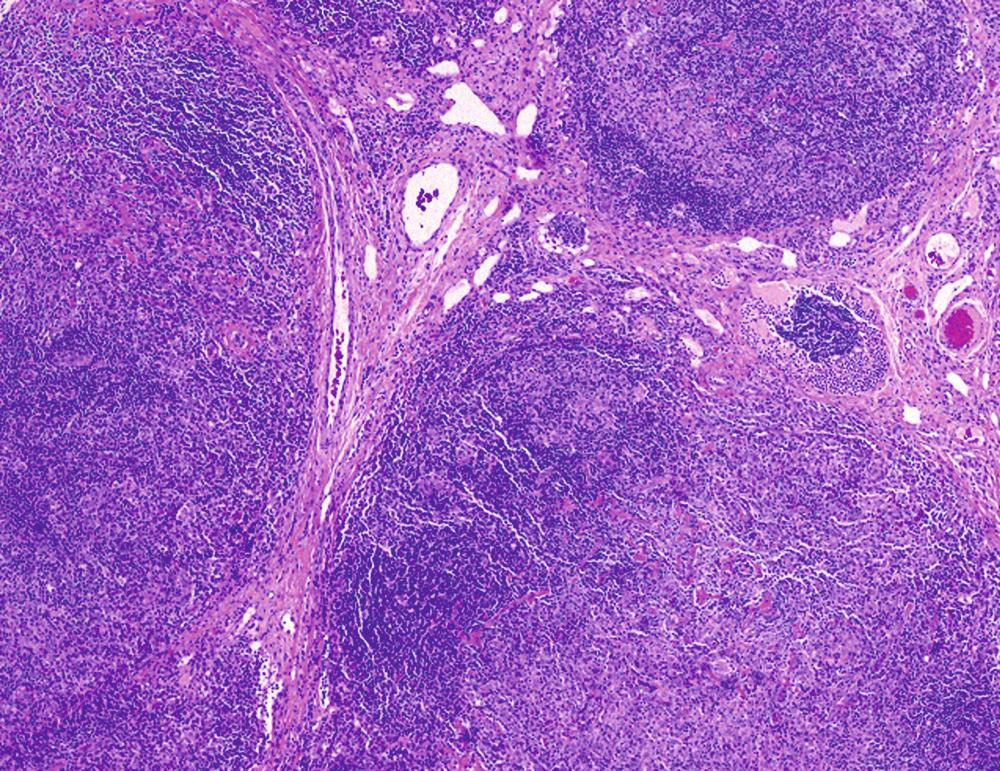
From 2007–2013, the National Cancer Institute (NCI)-sponsored SEER data revealed the following patient 5-year relative survival rates for patients age 0–19 years: LR 100%, NS 96.3%, MC 96.4%, and LP 100%. In patients of all ages, the 5-year survival rate for LDHL was 58% ( Table 68.1 ). Reports have shown that LPHL has a better prognosis and needs markedly reduced therapy to achieve cure. This differentiation of therapeutic response between LPHL and the other classic HL histologic types appears to validate the distinction observed in the immunophenotyped RS cells. The worse outcome of the MC and LD subtypes may reflect their typically higher stage at diagnosis.
| Histologic Subtype | Incidence of patients age 0–19 diagnosed with HL in 2007–2013 (%) | 5-Y relative survival rate SEER 2007–2013 (%) | Typical presentation |
|---|---|---|---|
| Nodular LP | 7 | 100 | Localized disease |
| Classic NS | 67 | 96.3 | Lower cervical, supraclavicular, and mediastinal nodes |
| Classic MC | 8 | 96.4 | Often advanced disease and extranodal involvement |
| Classic LD | <1 | N/A | Rare in children, common in HIV-infected patients, widespread disease with bone and bone marrow involvement |
| Classic LR | 2 | 100 | Localized disease |
Classically, children with HL present with painless enlarged lymph nodes, typically in the cervical or supraclavicular nodal groups (see Table 68.1 ). Nodes are often described as rubbery and fixed. They may be either single or matted with other nodes. Occasionally, because of rapid growth, tenderness may develop. Tumor lysis syndrome, a result of rapid and extensive tumor growth and a common complication in children with NHL, is rarely seen in children with HL.
HL tends to spread in a contiguous manner. Therefore, at presentation, one must examine carefully the nodal groups adjacent to the initially identified nodes. More than 90% of patients have involvement of either the cervical or mediastinal nodal groups (or both). Interestingly, HL tends to spread from the cervical nodes of one side of the neck to the mediastinum before it spreads to the contralateral cervical nodes. When laparotomy was included in the staging process (which is no longer routinely performed), the spleen was noted to be involved in one-quarter of patients. When evaluating the histologic subtypes and patterns of initial involvement, the MC and LD subtypes have more widespread involvement than do the NS or LP subtypes (see Table 68.1 ).
Mediastinal disease, in addition to a predilection for certain histologic subtypes, is most common in girls older than 12 years, and in those with constitutional symptoms (also known as B symptoms). Mediastinal disease may appear with significant respiratory compromise due to compression of the trachea, carina, or both, including the major bronchi ( Fig. 68.4 ). These patients may have dyspnea on exertion or at rest, persistent cough, or stridor. They may have recently been treated for presumed asthma or bronchiolitis without radiographic imaging. Patients with this presentation can have a history of orthopnea and are most comfortable in an upright forward-leaning position to relieve the pressure on the airway (from the anterior mediastinal mass). The physician must be vigilant for mediastinal disease because it may be silent until a patient is sedated for a radiologic or surgical procedure. Ventilation may prove impossible in these patients, even with intubation, because of distal tracheal or bronchial obstruction. It is imperative that all patients with suspected lymphoma (HL or NHL) have a chest radiograph or chest computed tomography (CT) scan before any sedation or procedure. Signs of superior vena cava (SVC) obstruction, including edema and cyanosis of the face and jugular venous distention, may also be present. Extralymphatic involvement can include the liver (the most common extralymphatic organ involved), lungs, bone, bone marrow, and skin, among other sites. Whereas bone marrow involvement is present in only 4–14% of patients overall, among those patients with stage IV disease, it occurs in one-third of patients.
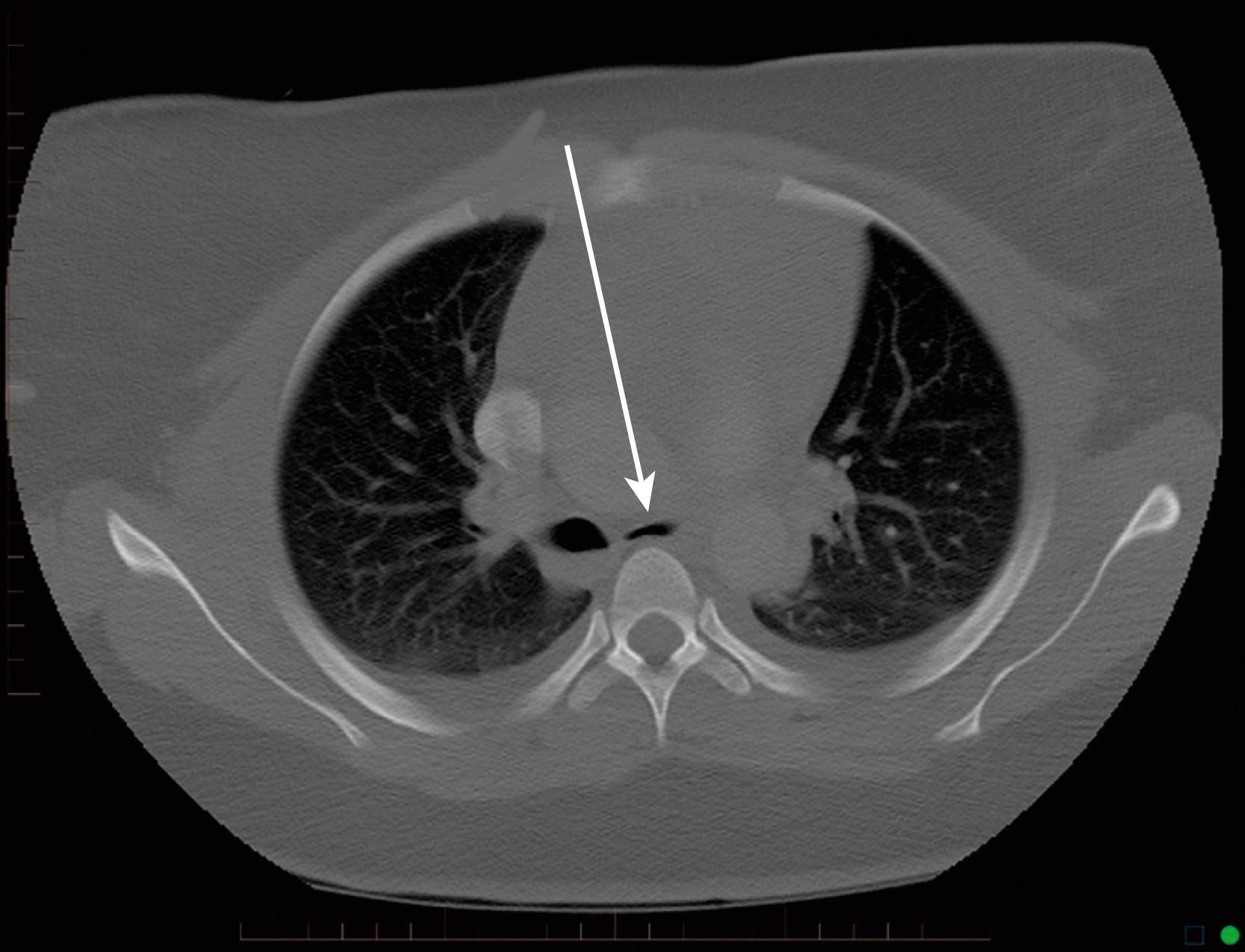
Most patients have no systemic symptoms at the time of initial diagnosis. About one-fourth of patients will have one or more B symptoms, defined as unintentional weight loss of more than 10% in the previous 6 months, unexplained recurrent fevers greater than 38°C, or drenching night sweats. Pruritus, fatigue, and anorexia are other nonspecific symptoms seen in HL patients. Laboratory findings at diagnosis are nonspecific and typically are indicative of an inflammatory process. The erythrocyte sedimentation rate (ESR), serum copper, and ferritin levels are frequently elevated. The lactate dehydrogenase (LDH) may be elevated as well. Although not common, leukopenia may be indicative of bone marrow involvement.
The diagnostic evaluation should include a history, physical examination, and laboratory and radiologic studies ( Box 68.1 ). The history should focus on “B” symptoms and symptoms related to SVC syndrome and tracheal or bronchial compression. The physical examination should be directed to the obviously involved nodal groups and also to adjacent groups, keeping in mind the natural history of HL and its propensity for contiguous spread. The patient is considered to have bulky disease if contiguous extramediastinal nodal aggregates are >6 cm and/or the mediastinal tumor width is more than one-third the maximal thoracic diameter on an upright posteroanterior chest radiograph. Auscultation of the airway, palpation of the abdomen, and examination of distant nodal groups are all critical as well.
Complete physical examination with documentation of involved nodal groups (including measurements of nodes), and involved extralymphatic organs
Complete blood cell count, chemistry panel including hepatic function tests, erythrocyte sedimentation rate, copper, ferritin, lactate dehydrogenase
Chest radiography to evaluate for possible mediastinal disease and airway compression
CT scans of areas identified on physical examination (also include chest, neck, abdomen, and pelvis)
18 FDG-PET imaging
Excisional biopsy of node
Bone marrow biopsies and aspirates (bilateral) ( 18 FDG-PET) may be used in lieu of bone marrow examination)
Staging laparotomy/laparoscopy (mandatory if considering radiation therapy alone) with splenectomy, nodal sampling, and wedge biopsies of hepatic lobes
18 FDG-PET, 18 flurodeoxyglocose–positron emission tomography.
Laboratory examination should include full blood cell counts and chemistries, including hepatic function tests, LDH, ESR and C-reactive protein (CRP), copper, and ferritin. Inflammatory markers, if elevated at diagnosis, can be used to follow response to therapy. Associated cytopenias may be seen, including anemia due to impaired mobilization of iron stores, autoimmune hemolytic anemia, and immune thrombocytopenia. However, no clinical findings are pathognomonic for HL. Ultimately, the diagnosis awaits the biopsy of involved sites, most commonly an excised lymph node. The surgeon’s goal is to perform the biopsy at the most accessible nodal region to obtain adequate tissue for diagnosis. Excisional biopsy of the largest lymph node is preferred because fine-needle aspirations generally do not provide adequate tissue. For cytogenetic and molecular genetic evaluations, it is imperative that biopsy material is placed in a sterile container as fresh tissue. Formalin should never be used. For patients critically ill at diagnosis, such as those with severe airway obstruction, diagnosis by alternative methods may need to be considered. These include nodal biopsy with local anesthesia alone, CT-guided percutaneous needle biopsy of the mass, aspiration of a pleural effusion, or a bone marrow biopsy and aspirate if marrow disease is suspected.
Further evaluation of a patient with HL is required to determine the extent of disease at diagnosis and thus the stage of disease ( Table 68.2 ). This common staging system for HL was adopted in 1971. This system is based on the observation of contiguous nodal spread in HL. Patients are further divided into asymptomatic (A) and symptomatic (B) subcategories. This subclassification for symptomatic patients is based on the findings of a worse prognosis for B patients and the need for a systemic therapy approach (i.e., chemotherapy in addition to radiation). This likely reflects the finding that patients with B symptoms are more likely to have distant, widespread disease when histologically staged.
| Stage | Definition |
|---|---|
| I | Involvement of a single lymph node region (I) or of a single extralymphatic organ or site (IE) |
| II | Involvement of two or more lymph node regions on the same side of the diaphragm (II) or localized involvement of an extralymphatic organ or site and its regional lymph node(s) with involvement of one or more lymph node regions on the same side of the diaphragm (IIE) |
| III | Involvement of lymph node regions on both sides of the diaphragm (III), which may be accompanied by involvement of the spleen (IIIS) or by localized involvement of an extralymphatic organ or site (IIIE) or both (IIISE) |
| IV | Disseminated (multifocal) involvement of one or more extralymphatic organs or tissues with or without associated lymph node involvement or isolated extralymphatic organ involvement with distant (nonregional) nodal involvement |
For HL, the decision for the type and intensity of therapy rests on the staging results. Historically, two methods of staging have been used in HL patients: clinical and histologic. In the past, all patients underwent both methods. Clinical staging includes physical, laboratory, and radiologic evaluations. Histologic staging required a staging laparotomy with splenectomy, nodal sampling, and wedge biopsies of both hepatic lobes. With the evolution of radiologic evaluations, histologic staging is no longer necessary. For clinical staging, positive emission tomography (PET)-CT examination is the preferred modality. 18 Flurodeoxyglocose (FDG)-labeled PET (FDG-PET) has been found to be more sensitive and specific than either gallium or CT ( Fig. 68.5 ). Similar to gallium scanning, it leads to a higher staging in a significant percentage of patients. FDG-PET during and after therapy has been highly predictive of patient outcome and helps to differentiate residual scar tissue from residual lymphoma, although false-positive findings with inflammatory conditions have been reported. In children, it is important also to recognize the phenomena of thymic rebound after therapy. This can result in both an enlarging mediastinal mass on CT and a positive nuclear medicine scan. An experienced radiologist will recognize this phenomenon by its timing (within the first 6 months after therapy has been completed) and by the normal (although enlarged) homogeneous appearance of the thymic tissue. However, false-negative interpretations can occur. Thus, close follow-up of these patients is critical. Finally, the bone marrow examination is being replaced by PET-CT as FDG-PET is a sensitive and specific means of detecting bone marrow involvement in pediatric HL (see Fig. 68.5 ).
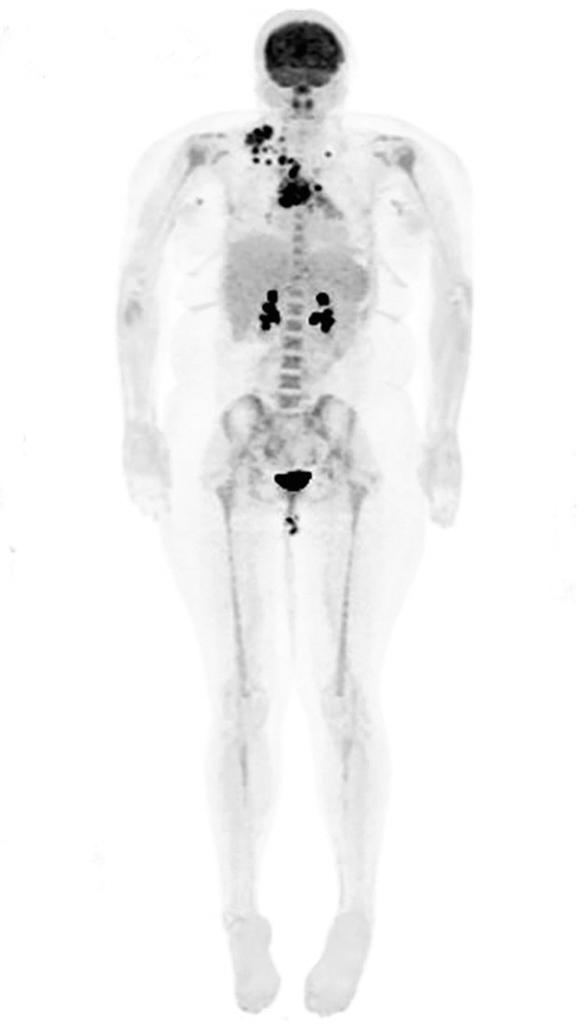
Prior to treatment, children with HL are placed in risk groups that are based on clinical staging, presence or absence of bulky disease, and systemic B symptoms. Different cooperative groups have used various methods of risk stratification for classic HL based on prior outcomes, and there is no consensus between various cooperative groups. The Children’s Oncology Group (COG) currently defines low-risk disease as stage IA or IIA with no bulky disease. High-risk patients are those with stage IIB with bulk, IIIB, or IVB. Intermediate risk includes the remaining patients who are not low or high risk. In adults, the International Prognostic Score has been used to stratify patients by risk but includes variables that are not applicable to children. The Childhood Hodgkin International Prognostic Score (CHIPS) is a new tool that has identified a subgroup of intermediate-risk patients with a worse prognosis. This system is a straightforward and inexpensive method that uses four predictors of adverse event-free survival (EFS) to stratify patients: stage IV disease, large mediastinal mass, albumin of <3.5, and fever. This scoring system will need additional validation in other risk groups, and studies are ongoing.
Several strategies have been effective in the treatment of HL. These include radiation therapy alone, combinations of irradiation and chemotherapy, and, most recently, chemotherapy without radiation. For children in particular, four principles guide modern HL therapy. For those with early- or low-stage HL (I–III), reduction of therapy duration and intensity to reduce long-term sequelae (while maintaining the current high cure rates) is a central principle in current regimens. In concert with this, the reduction and eventual elimination of irradiation as a method of therapy in children is important. The third and most recent principle is response-based therapy. This reduces therapy for those who do not require additional doses by adjusting or eliminating radiation and/or anticipated cycles of chemotherapy based on the tumor’s response to the initial courses of therapy. Fourth, for those with high-risk HL, intensification of therapy and identification of new and more effective regimens to increase relapse-free survival are needed.
Finally, advances in pediatric oncology have been substantial, primarily owing to patients being managed on protocols through the international cooperative groups. Children, including adolescents, diagnosed with HL should be referred to, and their treatment coordinated through, one of the many centers associated with these groups. These children, through participation in clinical trials, receive the most advanced and effective therapy available today.
Despite the goal of eliminating radiation from the therapeutic regimens for children with early-stage HL, it must be recognized that HL is a very radiosensitive neoplasm. A long record of efficacy exists using radiation either alone or in combination with chemotherapy for this neoplasm. Radiation therapy has traditionally been given to the sites of disease and contiguous, clinically uninvolved areas. This is known as extended-field irradiation. In pediatric HL, reduced-field techniques are primarily used now, including involved-field, involved-site, and involved-node. In children, involved-field irradiation has been shown to provide excellent local control (97%). A study from Germany found that not only were the remission rate and disease-free survival (DFS) no different between involved-field and extended-field irradiation, the side effects (leukopenia, thrombocytopenia, nausea, gastrointestinal toxicity, and pharyngeal toxicity) were significantly reduced when using only involved-field irradiation.
The severe and lifelong side effects of irradiation (cosmetic defects, growth retardation, endocrinologic sequelae, and secondary malignancy) on a growing and developing child are a compelling reason to look for alternative methods. Appreciation for these long-term effects has led to a gradual reduction in the dose and in the size of the field treated. More recently, the focus has been to eliminate irradiation in subsets of children with HL. Radiation has been successfully avoided in patients with certain characteristics, based on risk group and response to therapy, without compromising outcome. Currently, however, combined-modality therapy remains the standard of care for many children and adolescents with HL.
Become a Clinical Tree membership for Full access and enjoy Unlimited articles
If you are a member. Log in here